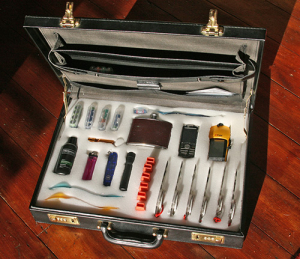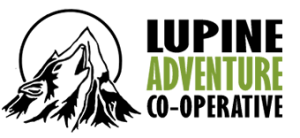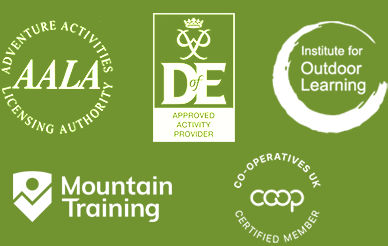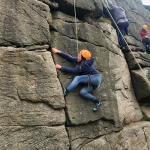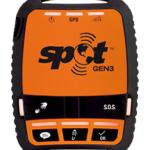DofE Expedition Leader’s Tips, Tricks and Hacks
1. Pipe cutters.
Pipe cutters for aluminium tent poles. If you buy replacement tent poles then you generally buy by the width and have to trim them down to the right length. A couple of quid on one of these is a lot quicker, easier and neater than a Hacksaw, it is also easier to transport as has no blade to snag on things.
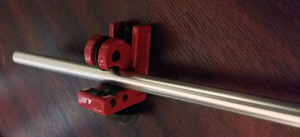
2. Binoculars.
You probably know this but if you are conducting remote supervision in a hilly area then you really need a pair of Binoculars. It can take a lot of the guess work out of identifying your group from a distance. I bought a pair of Bushnells for about £20 and they seem pretty decent for a budget binocular. The 16×32 number means that things will appear 16 times bigger and the big end lens is 32mm across (the bigger the lens the more light and clearer the image).
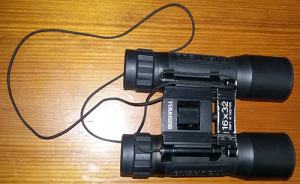
3. Uni Posca pens.
Uni Posca paint pens are great for marking up tents, boots anything really. It is paint in a pen. We bought the PC-5m nib size in ‘White’ and ‘Metallic Blue’ which seems to work well with most things.

4. Dash for it maps.
Dash for it maps are OS map wholesalers. Their maps are generally about 1/3 price than you would find on the high street. It is staggering how much cash we have saved since they were brought to our attention. They usually have a further discount code running. When you go on their website a chat box appears, just ask them using that if they have a discount code operating at the moment and they tell you it.

5. Crochet hook.
At the join of aluminium tent poles there is a short smaller tube of aluminium that slots into the next pole (the silver bit in the photo below). Sometimes groups accidentally force the silver bit into pole 2 when trying to slot pole 1 over it. When this happens your first reaction may be to assume that it has snapped off in pole 1 but no it is just pushed in to pole 2. You can use a crochet hook to put it back out again then simply squeeze the end of the pole (where you can see the 2 dimples in pole 2) with pliers to make it stay in place again. We use a 3mm crochet hook.
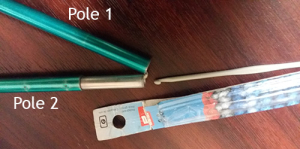
6. JC040.
We wanted some branded T-shirts but wanted them to be half decent wicking shirts. JC040 seems to be some sort of product number for these shirts and we think they are great. Some (cheap) wicking t-shirts smell really bad quickly but these don’t. If you or your group want dirt cheap wicking polo shirts to get embroidered (or just to wear as they come) then ask your embroiderer for JC040 and they will probably be able to sort you out for under £8 each.
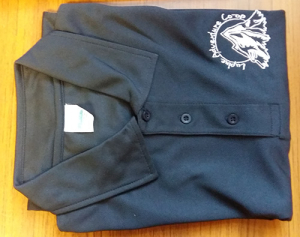
7. Tag your kit in stores.
We bought a load of these red and green blank credit card sized tags. When something comes in it is checked, and if all is well a green tag is signed and dated and attached to the kit before the kit is put on the shelf. If there is a problem with it then it is red tagged and the problem is written on the tag with a sharpie. When the kit goes out the tag is removed and put in a tub by the door for cleaning with meths before being returned to the box. If the links above have expired then searching for ‘100 green pvc cards’ on ebay or amazon should bring them up.

8. Waterproof notepad
I usually carry two of these. One lives in my first aid kit should the worst happen and the other in a dry bag. The one in my dry bag gets used mainly for debriefs. When I debrief I usually conduct individual debriefs on the move in the last 2 or 3 km of the expedition. When doing this I make notes in my waterproof notepad that I can refer to in the group debrief near the end or in my assessor report (depending on my role and the expedition) I usually use my red Staedtler pen but a biro works just as well. There are a few brands available. The one shown below, Lomo, Rite in the rain.
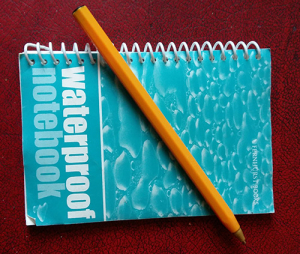
9. Cable ties.
Cable ties are great for fixing boots, rucksacks, tents and more ‘in the field’. I started carrying them as advised on Winter Mountian leader training as a crampon fixing tool but they have made the move over to my summer kit and get used more than you would imagine (though never for fixing crampons).
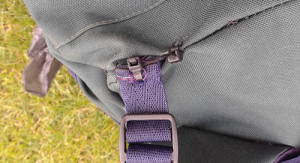
10. Red Staedtler Pens.
I guess I don’t really need to put this here but they are great for marking up laminated OS maps. The red one cleans off (with meths) better than most colours, get the superfine point.

11. Protractor.
There are lots of different ways to teach compass use and taking bearings from a map, you often need to take different approaches for different students. One day a student said something along the lines of ‘so you are using the compass like a protractor‘. Since then I have found that the following process works really well.
1) Asking students to guess the bearing (of the path, for instance) first then turning the dial on that compass to that bearing.
2) Then saying that you can be more accurate by using a protractor to read the bearing and again manually turning the dial on the compass to that bearing.
3) Then saying you can be even more accurate using the compass as a protractor to read the bearing from the map and demonstrating how to do that.
This method is often lost on older people as they probably haven’t seen a protractor for 50 years.
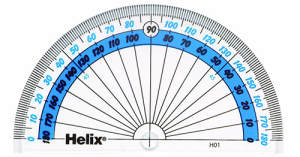
12. Banana boxes
You need boxes to put things in. In our opinion banana boxes are ideal.
- They are a good size, big enough to get big things in but not so big that they become very heavy.
- They are free, we pick ours up from Morrisons
- They are breathable, if something is slightly damp it doesn’t really matter.
- They are pretty robust and when one gets a bit battered you just replace it.
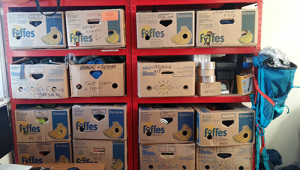
13. Fulton Stormshield Umbrella.
I know it isn’t really the image for the outdoor professional but a decent umbrella is great for remote supervision. Most waterproof systems work best with a nice big heat gradient between you and the outside. Fine if you are walking, not so great if you are sat still. Life sat in the rain is so much better under an umbrella. This type has wind vents so you can use it in a wider range of weathers.
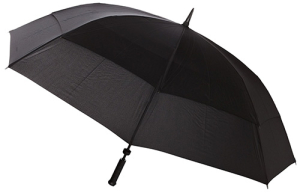
14. 12 litre really useful boxes.
The 12 litre ‘Really Useful’ box is just the right size for storing and transporting maps.
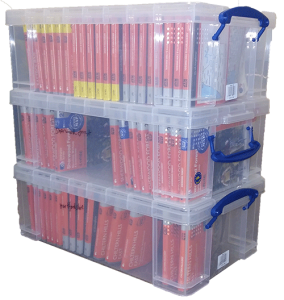
15. Arrow Straighteners for straightening aluminium tent pegs
I don’t think that there is a more satisfying kit maintenance job than straightening aluminium tent pegs with an arrow straightener. If you want to see it in action (and I know you do 🙂 )there is a little video on our Facebook page.
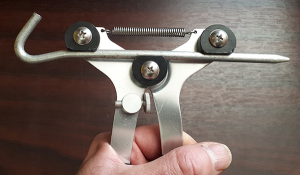
If you have any further suggestions then send us an email and we’ll either add to this page or start a new one.
The above items are here on merit. Some of the links in this document will earn us a small affilliate fee, some don’t.
And lastly…
I’m just going to leave this here.
